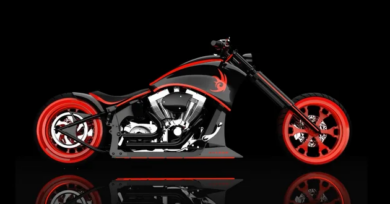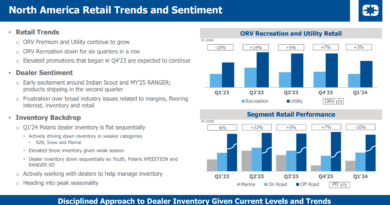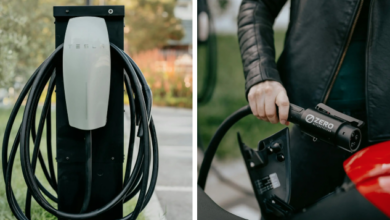July 23, 2007 – How soon will Chinese enter on-road market?
By Steve Bauer
Managing Editor
Although their presence continues to grow in the ATV and scooter markets, Chinese manufacturers have been notably absent in the on-road motorcycle segment, according to Powersports Business’ New Entrant Motorcycle Dealer Survey. According to 150 dealers surveyed, only 10 responded that they carry Chinese motorcycles, whereas three times as many have scooters and twice as many have ATVs.
As mature manufacturers continue unveiling cutting-edge technology in terms of engine size and styling, the Chinese are struggling to overcome the 250cc barrier, preventing them from providing any competition in the big bore motorcycle market, according to industry experts.
Whether it’s lack of technology, tough emissions standards, few investment partners or limited resources, industry experts agree that the Chinese have a long way to go before they’ll be able to produce an on-road motorcycle that provides both the performance and reliability that dealers and consumers expect in the United States.
Trailing technology
Without question, the biggest obstacle facing Chinese manufacturers is obtaining the technology to allow them to produce an engine larger than 250cc. Until that happens, the companies will continue to play catch-up.
Mathu Solo, president of Diamo USA, a distributor of powersports products made in China, Europe and the U.S., says in the past, there
wasn’t demand for large-displacement engines in China’s domestic market, which dictated that manufacturers focus on smaller engines. But now that exports have become a major part of the country’s economy, the manufacturers are scrambling to catch up.
“I know there are factories out there that are trying to copy technology, but to get up to a 600cc and larger engine is a very tough thing to do,” Solo said. “I know that one of our factories has been working on an engine and trying to get a carburetor to match up or trying to get some of these critical parts, the slightest thing can affect how these bikes perform at top speeds.”
Henry Lonski, founder of consulting firm Lonski and Associates and a former employee with Vento motorcycles and United Motors, agrees with Solo that the technology barrier is too much for Chinese manufacturers to overcome at the moment.
“They don’t have the technology for anything bigger than 250cc at this particular point,” Lonski said. “Honda, Yamaha and other Japanese leaders are working in parallel in China, but they still can’t get over the 250cc technology barrier. Not only is China struggling to get past that 250cc obstacle, but the consistency of their product is also holding them back.”
Juan Villegas, president of United Motors, echoes Lonski’s statement that problems with consistency are compounding the issues with technology.
“Dealers shouldn’t expect reliable engines above 200ccs from China anytime soon,” Villegas said. “So that has limited the Chinese manufacturers’ ability to produce a broader product line. We have a 50-200cc off-road line that comes from China, and that’s a product that took us five years to bring it to an acceptable quality for the American market. So where there could be opportunities in that type of product, the lack of quality creates a cap.”
Market development
Another factor in China’s inability to compete with other on-road manufacturers is that its products aren’t developed for the U.S. market, which craves a stylish, consumer friendly product.
“Even the 250cc engines the Chinese are offering really aren’t adapted to the U.S. market,” Lonski said.
UM’s Villegas says that not only is the development lacking, but so is the interest in even investing in larger-displacement engines.
“There are already some engines above 200cc, but we have been very active in testing those and we haven’t found reliability and performance,” he said. “So they already have it, but they’re not mature for the U.S. market, and I would caution dealers to analyze before they jump into any Chinese engines that are bigger than 200cc.”
Emissions standards
One area industry experts disagree on is how much of an impact emissions standards have on the lack of large engine motorcycle development in China.
Mel Harris, vice president of motorcycles for American Suzuki Motor Corp., believes that China’s biggest obstacle is to meet the tough emissions standards in place for U.S. motorcycles. He says it’s been easier for manufacturers to produce ATVs and scooters because the standards aren’t nearly as stringent.
“Motorcycles already have restrictions that (manufacturers) have to meet, including emissions and sound, and that’s where the difference is,” Harris said. “(The Chinese) can’t meet those goals yet. That’s why they’re not in the big units. The smaller units — (there’s) not the same restrictions, and they’re getting away with it. You still see some two-strokes (motorcycles) coming in from China. That’s the big difference right now.”
Diamo’s Solo disagrees, saying the emissions standards aren’t the main obstacle to the lack of big engine development in China.
“I do know the restrictions are going to be tighter for motorcycles, but I really don’t think it’s an emissions issue as much as it is a flat technology issue,” he said. “They’re all toying with it, but when they try to copy a part or do partners’ technology, whatever missing is not matching up. They’re just not able to put the whole package together and produce a full performance bike.”
Around the corner
In spite of the troubles Chinese manufacturers are having producing larger engines for motorcycles, many in the industry agree it won’t be long before the U.S. market sees a 500cc Chinese-built engine.
Lonski believes it will take nearly two years for a 500cc Chinese engine to arrive in the U.S., and it will be a configuration between Japanese, Taiwanese and Korean technology.
“The Japanese did a very good job in developing their lines,” he said. “When they went to another country they went to Taiwan first, and then they went to Korea. So when you look at the Taiwanese industry, they’ve managed in the ATV sector to go up to 300-400cc now. Suzuki did a lot of work with Hyosung in Korea, and they showed them how to build up to 650cc. I think the near future is probably 500cc, and then on the leading edge would be 650cc, but that’s not going to happen in the next 18 months or so. The first leap is going to be a 500cc, and that’s going to be some type of configuration between what the Japanese, Taiwanese and Koreans have done. Then they’ll move into the 650cc and larger.”
Diamo’s Solo says large-displacement engine development is in the works in China, and eventually these manufacturers will be able to provide a competitive product.
“I do know it’s on their radar screen, and there are quite a few factories that are working hard to try and develop a larger engine, whether it’s for a cruiser or a sport bike,” he said. “Typically you’re going to see it in Taiwan first, and then it will leak its way onto mainland China as far as technology goes. But there are some pretty strong companies out there that have the R&D departments where they can make some things happen. It’s just a matter of how much money they have and how quickly they can do it.”
So how soon does Solo see a large-displacement Chinese motorcycle hitting the market?
“I don’t think it’s 5-10 years down the road. Typically what we’ve seen is that you’ll have a one- or two-year period where the initial technology coming in is very poor and risky, so we typically evaluate new technology for the first year or two before we jump in. So I think you’ll see something in the 500cc range in the next 12 months,” he said. “But it will be 2-3 years before you see good competition coming out of China on those big engines.”




